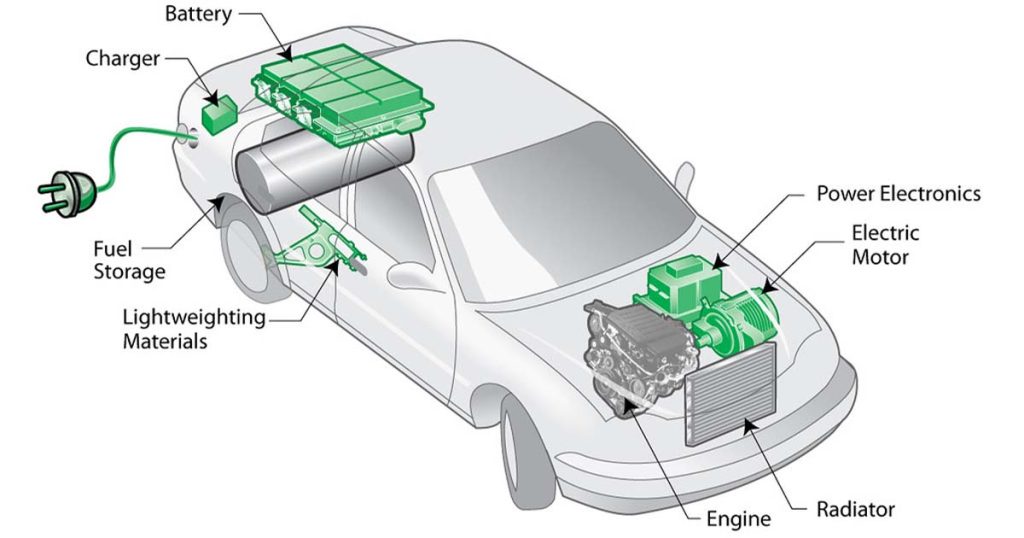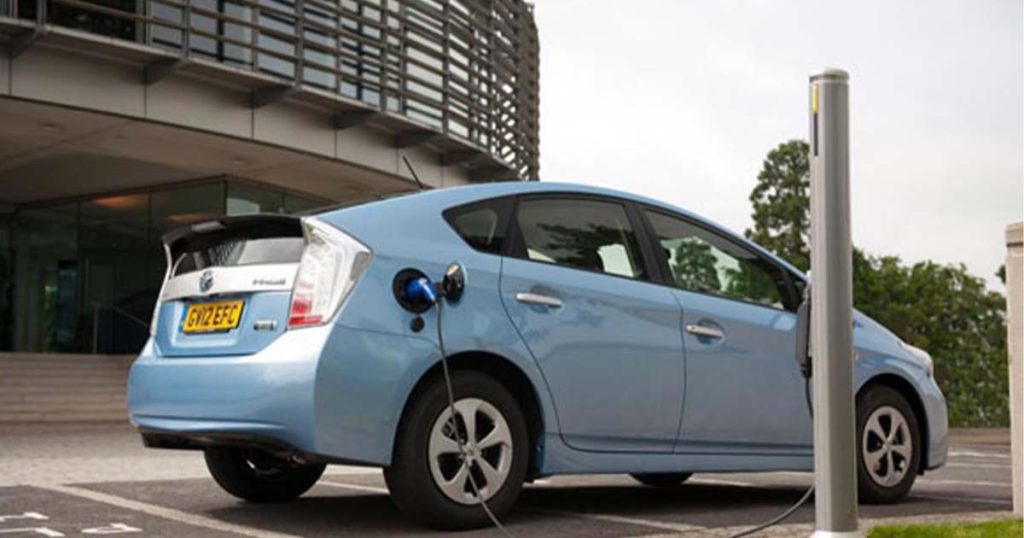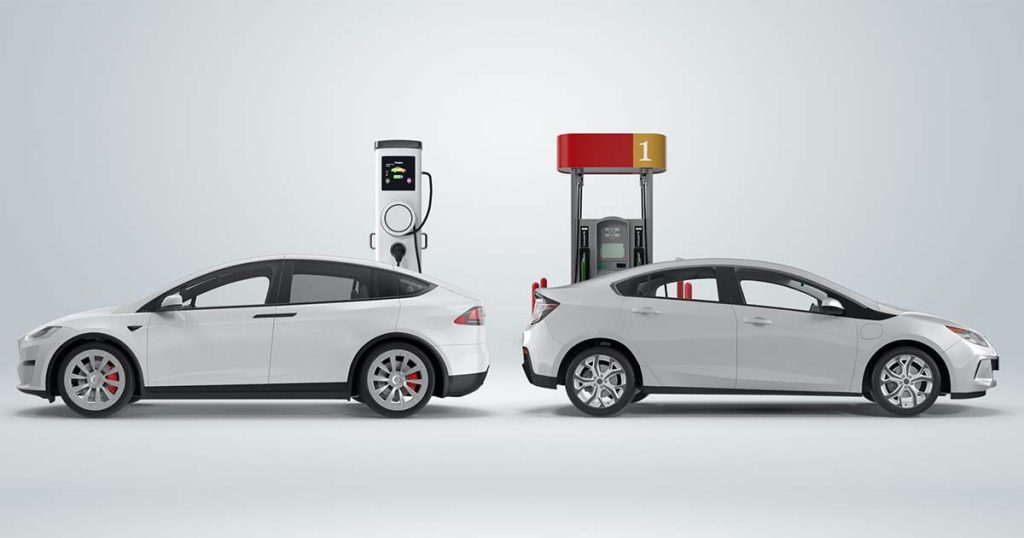What Hybrids Need Charging for Long Trips Best in 2025? The needs of the time: Hybrid cars have transformed global travel with fuel and electric power, working in synergy.
As hybrid tech continues to become more advanced, long-distance travel will be easier than ever in 2025-but still not without its challenges. An important part of maintaining efficiency on a road trip is learning how to charge your hybrid efficiently to keep the journey running smoothly.
Since hybrids have gasoline and battery power, charging them requires a strategic approach, unlike fully electric vehicles. Regeneration is better on newer cars, making up quite a bit of range on downgrades. One also now has better navigation tools in the car to help factor in energy consumption in routing and an ever-increasing number of reliable charging options.
But long road trips need some savvy planning – picking the best charging stations, using portable charging solutions, and even employing energy-conscious driving tactics. By following these tips, drivers can improve their car’s range, save money and lessen their environmental impact.
Plugging some pop context into the “road trip,” a way-hydrated hybrid in 2025 will make travel gentler without the agony of sending a sweaty-bald BEV to the express chargers or fretting over pump prices.
Understanding the Charging Needs of Hybrid Vehicles
There are various hybrids that all require their way of charging. Traditional hybrids – officially classified as hybrid electric vehicles, or HEVs – recharge their smaller batteries with regenerative braking and gasoline engines.
These are vehicles that utilize an internal combustion engine (ICE) and an electric motor that uses energy stored in batteries; HEVs don’t plug in but provide an excellent option for drivers who want to be more fuel efficient but don’t want to plug in.
They have a larger pack than regular hybrids that must be plugged in to maximize the electric range (Hi-Volt). Pure battery electric vehicles (EVs), dependent on charging stations, have no alternative, while PHEVs present a flexible combination of battery and gasoline power that dispenses with range anxiety. However, efficient long-range travel still assumes that charging will be done in an electric-maximal way.
A significant factor in the frequency of vehicle charging is the size of the battery. With PHEVs, most will provide an all-electric range of 25-60 miles before reverting to gasoline, meaning drivers must plan their itinerary, find charging stations, and conserve energy to make longer trips move seamlessly.
Mapping Out Charging Stations for Optimal Travel
An essential part of any hybrid road trip is locating trustworthy charging stations. By 2025, charging networks had grown dramatically, with providers like Tesla Supercharger, Electrify America, and ChargePoint offering huge nationwide coverage.
However, not all stations are equally suitable for hybrid charging requirements. While full EVs can take advantage of high-speed DC fast chargers, many hybrids-especially PHEVs-can only do Level 1 or Level 2 charging, which is slower.
Charging Levels Explained: DC Fast Charging (Level 3): While often reserved for full-blooded EVs, ultra-fast chargers at a DC Level 3 station may or may not be compatible with most hybrids.
Level 2 Charging (240V): Commonly available at hotels, malls, and rest stops, Level 2 chargers are great for PHEVs and provide a full charge in hours.
Level 1 Charging (120V): It is the slowest, using standard household outlets; this is effective overnight but not for quick stops.
To make a trip seamless, drivers should use apps like Plug Share, Charge Hub, and A Better Route planner to find compatible stations, estimate charging times, and work battery stops in the travel timeline. Planning also maximizes your electric range and keeps your fuel consumption down by avoiding needless detours, helping you to have a smoother, longer-distance hybrid journey.
Read More: Car financing & insurance
Essential Charging Equipment for Hybrid Owners

For hybrid drivers, the correct charging accessories can be the difference between the success or failure of a long trip. Although public charging points are available more frequently, having the necessary equipment allows you more freedom and convenience, especially in more underdeveloped less developed areas.
A portable Level 1 charger is essential if you stay in hotels, campsites or rental properties and need to charge overnight. While a bit slower than Level 2 options, it allows hybrid drivers to charge up wherever a standard 120V outlet can be found. A universal adapter is also key charging stations may utilize different plug types based on the network or region.
An extension cord of good quality will also help reach very distant charging outlets and make life easier. Complementary to this, some hybrid owners are forking out portable power banks made specifically for EVs so they can have some emergency power if they ever need it in the middle of nowhere, where charging infrastructure is rare.
Armed with these necessities, hybrid travelers can charge fearlessly for long trips without concerns about charging limits.
Maximizing Hybrid Efficiency on the Road
Even with a carefully mapped-out route, there’s only so much to gain if you’re not driving as efficiently as possible. Hybrids provide massive advantages if drivers adjust their driving style to take advantage of electric and gas power. Electric mode is also perfect for city driving or stop-and-go traffic since the vehicle can rely on gas only as needed, leaving the battery to handle most of the work. This is where hybrids shine: they can run on just battery power for short distances without guzzling gas.
Hybrids should, however, strategically switch to gasoline power on highway stretches. Gas engines are better for maintaining higher speeds and efficiently cruising long-distance travel, though the electric mode is occasionally still usable.
Regenerative braking, which captures energy from braking to charge the battery, is another characteristic of hybrids. This works exceptionally well on downhill stretches and in cities with frequent stops. Also, avoiding rapid acceleration for extended speed and idle time will keep the use of energy low, guaranteeing the most efficient fuel or battery consumption after a long journey.
The Best Hybrid Models for Long-Distance Travel
Not all hybrids are created equal for road trips. For 2025, there are a few categories of winners when it comes to fuel economy, electric range and comfort when getting out on the road and covering miles.
None of those options, however, can touch what you get from the Toyota RAV4 Prime, which can drive on electricity alone for about 42 miles before it uses its hybrid gas engine for good highway fuel economy. With a quality interior and tons of tech that makes it a pleasure to spend long hauls in your car, the Hyundai Tucson PHEV offers a terrific amount of electric miles and usability. The Honda CR-V Hybrid is a versatile road tripper with good fuel economy, cargo space and reliable performance.
For those wanting something a little nicer, the Lexus RX 500h and BMW X5 xDrive45e offer long-range electric driving, high-end luxury, and performance.
Discovering the right hybrid options means considering factors like battery size, fuel economy and charging features to ensure a smooth road trip.
Charging at Hotels, Rest Stops, and Other Locations
The infrastructure at different locations in 2025 has made it easier to find some charging options while traveling. Many hotels now cater to hybrid and EV travelers and have charging stations available on-site. Under brands like Marriott and Hilton, major hotel chains have expanded their networks to power up hybrids overnight.
Rest stops on highways are also being upgraded; some have multiple fast chargers, ideal for charging up during long stretches on the road. We can also allow for additional stops while other people share the same time without unnecessary delays.
People have also transformed unexpected spots into charging stations, like grocery stores, shopping malls, and even public parks. These spots usually have free or inexpensive chargers, giving road-trippers a quick boost during a rest stop or meal. Most of these locations are also great options for charging stops, so planning a long trip around them will keep you efficient and happy while taking the most direct route possible throughout your journey.
Weather Conditions and Their Impact on Hybrid Charging

Harsh weather conditions may severely impact the lifespan and efficiency of a hybrid battery. Subzero temperatures wreak havoc on battery performance, leading to howling more frequent charging sessions and much less electric range.
The battery’s capacity takes a hit in low temps, which leads to the gasoline engine running more often. Too much heat can negatively impact battery life in the long term, speeding up the natural wear of the battery.
To counter these effects, hybrid owners are better off parking in protected areas or garages to shield their batteries from harsh temperatures particularly in summer. Heating the battery before a trip that is, while still plugged in makes it as efficient as possible in cold weather.
Also, relying on heated seats and the steering wheel instead of the climate control system saves battery power in winter. Implementing these measures allows hybrid drivers to enjoy optimal performance and useful battery life despite inclement weather conditions.
Cost Considerations: Charging vs. Fuelling
Powering up a hybrid is generally less expensive than filling a gas tank. However, costs will differ depending on where you live, who your electricity provider is and how quickly you want to charge up. By 2025, average public charging prices in the U.S. will generally be somewhere in the $0.15 to $0.50 per kWh range, meaning fueling up a plug-in hybrid (PHEV) will run anywhere from perhaps $3 (if very small) to as high as $10 (if large and inefficient). That’s far less than gas which can cost $40 to $70 for a full tank, even at moderate prices.
Many charging stations offer free or lower rates at businesses, hotels and shopping centers, increasing savings. Like level 2 stations, public chargers tend to follow flat-rate pricing or a subscription model, which can save you extra cash if you’re out on the road a lot.
Government incentives, such as tax credits, rebates, and lower tolls, are encouraging hybrid adoption, thus reducing the cost of long-run hybrid journeys. When you get it right, charging rather than gas is very economical, so hybrids can also keep long road trips practical and relatively cheap.
Emergency Charging Solutions for Hybrid Owners
Getting stranded with a dead battery is a real pain if you drive a hybrid vehicle, but hybrids have a few options for backup power outside their primary batteries. The roadside assistance services have also stepped up support for hybrid and EV drivers in 2025, now including mobile EV charging units to provide a quick battery boost. Most providers have special towing services that transport hybrid vehicles to the closest charging station if necessary.
For travelers going off-grid or off-road, the best solar chargers are the slow but effective emergency way to get some charge in your device’s battery. They can’t recharge a hybrid’s battery quickly but can produce enough power to increase its electric range in grueling situations.
Some hybrids use regenerative charging by their gasoline engine as well. The car’s design turns on the engine and runs it efficiently to recharge the batteries temporarily, giving it enough range to get to the next charge station. These emergency strategies can help hybrid drivers travel more confidently, even in remote areas.
Planning the Ultimate Hybrid-Friendly Road Trip
STAY ORGANIZED – You need to stay organized. A well-structured itinerary will help make the hybrid road trip run smoothly and efficiently. We base our travel choices on well-established charging infrastructure so you get maximum range on electricity and are left with minimum or no fuel to be burned. At the same time, booking hotels with charging stations means they can be charged overnight, minimizing the need for a midday stop.
Strategic planning includes selecting rest stops with high-efficiency Level 2 chargers, which deliver a full charge in a few hours. Travelers, in turn, may need to build in extra time for more prolonged but more accessible routes than the shortest possible path to avoid becoming stranded waiting for a charger to unlock.
Like all road trips, if you don’t prepare correctly, you might run into some common problems, like not being able to find a charging station empty, having to wait a long time to charge or having to charge at a very slow speed. By optimizing charging maps, timing the right stop, or keeping a flexible approach, hybrid nomads can achieve a fluid-powered, green expedition without any excessive detours or disruptions.
The Future of Hybrid Charging and Infrastructure

Rapid developments in charging technologies are paving the way for game-changing innovations that extend hybrid travel’s convenience and independence.” One of the most exciting ideas is wireless charging roads, where inductive charging systems allow hybrids and EVs to charge while they drive. Pilot projects in major cities by 2025 are already showing how much easier it would be with this technology, massively reducing the need for charging stops.
Another game changer is AI-driven route planning, which directs drivers to the optimal charging stations in real-time based on conditions, energy needs and driving patterns. These smart-systems can optimize charging schedules with minimal detours and wait times.
Hybrid road trips are running smoother than ever due to increased investment in ultra-fast charging stations, solar-powered stations, and grid-integrated energy solutions. With these developments being rolled out worldwide, the future of hybrid travel looks much more efficient, sustainable, and stress-free for long-distance drivers.
The Verdict: All Ready For 2025 Road Trips

The evergreen option for nickel here is hybrid vehicles if you want to travel long and fast. By 2025, as charging infrastructure evolves and hybrid technology advances, they will offer the best compromise between fuel economy and convenience.
Fully electric vehicles (EVs), as we know all too well, require precise route planning to avoid finding yourself well and truly plugged in somewhere. Still, hybrids have unparalleled flexibility using gasoline and electric power to suit the journey’s needs.
Electric Efficiency with Balanced Fuel
Hybrids excel in energy management, automatically switching between electric and gasoline power as driving conditions warrant. Plug-in hybrids (PHEVs) can travel 25-60 miles purely on electric power before seamlessly switching to gasoline, making them the arguably perfect car for city stops and highway cruising.
They are charged by regenerative braking to get the most out of a tank without external charging. The result? It means cheaper fuel, lower emissions, and a continuous journey.
Widespread Charging Access
Skip ahead to 2025, and charging infrastructure has matured, with a role in accommodating EVs, as a growing number of Level 2 chargers at hotels, rest areas, and retail locations. Still, without question, hybrids will be here to stay.
With services such as Plug Share and Charge Hub, highway-friendly stations are easier to find than ever before, and hybrid cars can confidently hit the road. For anyone who strayed beyond paved roads, hybrids also eliminate the risk of getting stranded without electricity at some point along the road a significant advantage over fully electric cars.
Athletics Over Distance: Technology Solutions
Modern hybrids have AI-enhanced energy optimization and adaptive cruise control, while real-time battery monitoring helps turn travel into rewarding, efficient, and stress-free experiences. Innovative navigation systems can even recommend the most efficient routes, ensuring drivers get the most out of every charge and gas tank.
In 2025, hybrids will be road trip-ready in terms of efficiency, availability, and no-nonsense features.
Conclusion
Traditional hybrids remain one of the best ways to travel long distances. They combine a fuel-efficient internal combustion engine with the convenience of all-electric power. Their engines can switch between gasoline and battery modes, making them ideally suited for a range of driving conditions. This also makes them a dependable green road trip car.
However, hybrid owners need to realize that potential and have a plan for how and when to charge, drive, and map trips. That means plotting out charging stations along the way to ensure that it does not have to deviate from any unnecessary stops and that the battery will be consumed efficiently.
Choosing hotels or other lodgings with charging options, picking rest stops with Level 2 chargers, and frequenting shopping centers and other places to receive free or low-cost charging is an excellent way to save on your travels. The comfort of being out there in the wild is added by bringing the right charging accessories portable chargers, adapters, solar backup, etc.
Driving styles also play a significant role in maximizing efficiency. On hybrids, you can maximize battery life by using regenerative braking in city traffic, running on gasoline on the freeway and keeping speeds steady, all of which reduce energy use. The range can be boosted further by tweaking climate control settings, preconditioning the battery and using energy-efficient features like heating seats.
As the charging infrastructure expands, including new technologies such as wireless charging roads and AI route planning, hybrid travel will become ever more seamless, sustainable and cost-effective. As these technologies are integrated and travel patterns sharpen, hybrid vehicle drivers in 2025 will be able to weave effective, efficient and green journeys.
